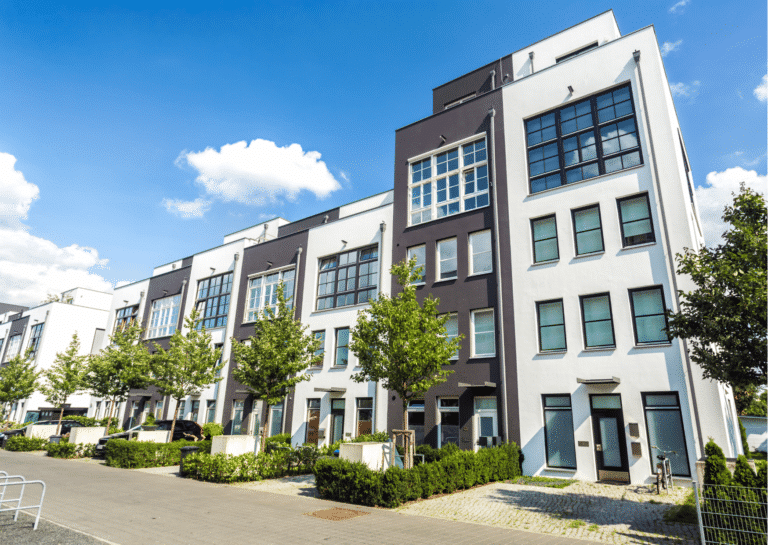Build to Rent – how has it performed in 2021, and where will it go in 2022?
November 24, 2021
In 2021, Build to Rent (BTR) enjoyed sustained growth as demand for high-quality rental housing complete with on-site management and purpose-built communal spaces continues to grow.
Research from Knight Frank revealed investment in the BTR market hit £2.35 billion in the first half of 2021.
Predictions state that by 2025, more than £75 billion will have been invested in the BTR sector, quantifying the market’s attractiveness for renters and investors alike.
It is clear that BTR is here to stay and will continue to grow significantly over the next few years. But how has the sector fared in 2021, and what can we expect to see in 2022?
The rise and rise of BTR in 2021
UK BTR transacted around £1.5 billion worth of deals in the first half of the year, demonstrating a rise of 30% from 2020.
In Q1 2021, plans for nearly 7,000 new BTR homes received planning permission – the highest of any quarter on record, according to the British Property Federation (BPF).
Figures from CBRE show some £736 million was committed to the sector in Q2 2021, up 67% compared to the same period last year.
A further £1.9 billion worth of deals were under offer during this time, up from £1.4 billion under offer in Q1 2021 – reflecting a 26% increase and indicating a healthy pipeline for the remainder of the year.
Interestingly, new home starts outside of London are driving the construction pipeline; in the year to Q3 2021, nearly 12,000 homes began construction in the regions.
BPF’s quarterly Build to Rent map reveals that, as of November 2021, there are 205,525 BTR homes in the UK, of which 63,950 are complete, 42,032 under construction and 99,543 in planning. This figure falls to 88,893 units in London and 116,632 outside the capital.
The trend is being driven by the changing perception of renting being acknowledged by investors. This growth of BTR has also seen significant companies break into the sector, with news that John Lewis plans to build 10,000 homes over the next decade.
Similarly, Lloyds Banking Group aims to own and let around 800 properties before the end of 2022, and retailer Boots sold a plot of land valued between £25-£30 million at its Nottingham headquarters.
This, coupled with the relative imbalance between tenant demand and new instructions, is expected to help drive the growth of BTR as more properties and choices become available shortly.
Looking ahead – what can we expect for 2022?
BTR has proven its resilience in the face of challenging times and continues to go from strength to strength, with predictions that 2021 as a whole will see record levels of investment.
Although most BTR investment has gone into the traditional city centre apartment blocks in inner-city areas, signs point to a rapid increase in the suburban build to rent market in 2022.
Despite lockdowns seeming like a distant memory, the need for suburban housing is glaring. The new hybrid working model means more families seek properties in outer areas that accommodate workspace and smart technology.
Ultimately, several factors will continue to support the BTR sector, with assets benefitting from tenant behavioural trends and preferences emerging through the pandemic.
These include the need for a functional workspace and the desire to reduce public transport use as we move to working more frequently from home – both of which are well catered for in BTR schemes.
On the downside, BTR has been criticised for being too expensive, too aimed at young professionals alone and for muscling in on the territory of small, individual landlords.
Overall, though, it is only set to grow, with its solid fundamentals and resilience during adverse market conditions likely to spark further cash injections from institutional investors. 2021 may already be a record year for Build to Rent, but 2022 will surpass it.
In the future, we expect to see significant deals done in the suburban BTR market, particularly helping the sector expand exponentially over the next few years.
